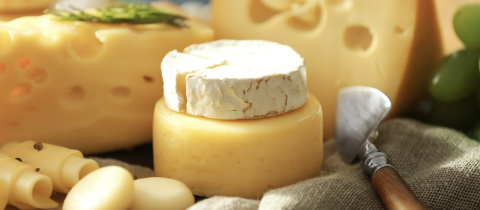Time Magazine, usually a reliable source of information, got this story wrong. “The U.S. Food and Drug Administration warned that products labeled ‘100% Parmesan’ might actually contain cheese substitutes like wood pulp” claimed Time. Well, the FDA did not issue any such warning. What it did to was send a letter, in 2012, to Castle Cheese about the company’s grated Parmesan cheese containing more cellulose than the 2% that is commonly allowed as an anti-clumping agent, but there was no mention of wood pulp. Then a few years later, in 2016, Bloomberg News commissioned a study of grated Parmesan cheeses and found that some contained up to 8% cellulose. “The Parmesan Cheese You Sprinkle on Your Penne Could Be Wood,” screamed the Bloomberg headline, setting the blogosphere on fire. The wood connection sprang from the imagination of an overeager headline writer. Yes, cellulose can come from wood pulp, but it can also come from asparagus or any plant material. And its origin is irrelevant.
Cellulose is the most prevalent organic compound in the world, it is the basic structural material of the cell walls of plants, making up some two to four percent by weight of all fruits and vegetables. And the human body doesn’t care if the ingested cellulose originated in wood pulp or in an apple.
We cannot digest cellulose, meaning that unlike ruminants, such as cows, we cannot break it down into fundamental absorbable components. For us, cellulose is a form of fibre, and fibre is important for the health of our colon. Bran, widely regarded as “healthy” because of its fibre content, contains about 35% cellulose. The increased bulk provided in the stomach and the intestines by cellulose has been associated with appetite suppression which is why many diets recommend foods with a high fibre content. So finding cellulose in grated cheese is absolutely a non-issue in terms of any negative health effect. Indeed, you could eat pure cellulose and the only problem you might encounter is an increased frequency of bathroom visits.
Why do we find cellulose in some grated cheeses? Because it prevents the cheese particles from clumping and makes for easier pouring. But it isn't right to add more cellulose than is allowed, especially if it is done to unethically increase profits. Cellulose is cheaper than cheese and adding it as a “filler” is fraud in the sense that customers are not getting what they think they are getting.
A bigger issue, however, is that when people think they are buying real Parmesan, they may be getting something else. Real Parmesan comes from the Parma region in Italy and cannot contain anything but unpasteurized milk that is less than 20 hours from cow to cheese, rennet and salt. Rennet is the mixture of enzymes derived from the stomach of calves that turns milk into curds. If a cow is ill and requires treatment with antibiotics, its milk cannot be used. No hormones that increase milk production can be administered. Even the diet of the cows is regulated with no silage, that is fermented stored crops, allowed.
How can you tell if you are getting authentic Parmesan cheese? Look for “Parmigiano Reggiano” on the label and with that name printed on the rind. But in Canada and the US there are all sorts of grated cheeses sold under the name "Parmesan," because unlike in Europe, it is not a protected name. There have been cases where Parmesan was actually found to be a mixture of other cheeses such as mozzarella, Swiss and cheddar with a dose of cellulose thrown in. The U.S.Justice Department prosecuted Castle Cheese for the adulteration and misbranding of cheese products, driving the company into bankruptcy. One of its executives is facing a possible prison sentence.
Again, this is not a health issue, but people were being misled because they thought they were getting authentic Parmesan cheese when they were not. The imitations do not offer the same taste as Parmigiano Reggiano, which has the second highest concentration of glutamic acid, after Roquefort. Glutamic acid and its salts provide a taste referred to as "umami," familiar to people as the taste produced by MSG. Of course because in this case glutamic acid is naturally occurring, it doesn’t raise the ire of the anti-MSG crowd. Bottom line? I do not decide on the nature of my grated cheese based on whether it contains cellulose or not. I decide on taste. And Parmigiano Reggiano tastes better than the imitations. And you can use the rind in soup. Yumm.
Want to comment on this article? View it here on our Facebook page!







